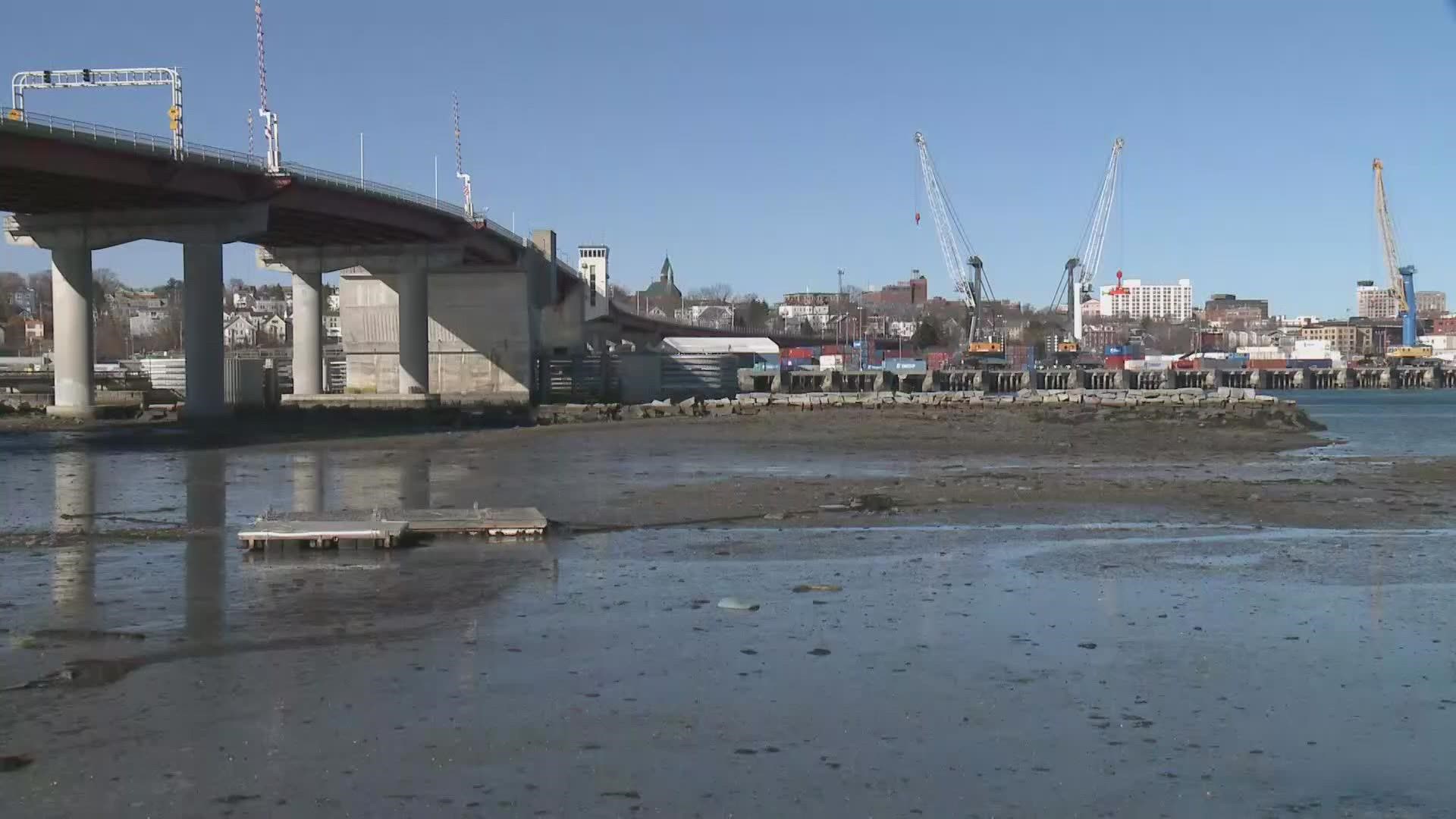SEARSPORT, Maine — The small town of Searsport has been sending ships and cargo to sea for two centuries.
But state officials are looking at the town and its cargo port to become a center of Maine’s energy future.
“Offshore wind is coming. It is coming,” Bruce Van Note, commissioner of the Maine Department of Transportation, said.
Gov. Janet Mills and environmental groups have been pushing for the state to begin developing floating, offshore wind turbines in the Gulf of Maine. The University of Maine has a design for a floating wind platform and is working now with a business consortium called New England Aqua Ventus to deploy the first massive, full-scale floating turbine off the coast near Monhegan Island.
The project is currently scheduled to be sent to sea in 2024.
There are no floating offshore wind turbines in North America yet, while Europe and Japan have a number of them. Maine has been pushing the technology since UMaine researchers developed the design and platform technology nearly a decade ago.
Mills identified a nearly 16-square-mile section of ocean, about 30 miles offshore, for a “research array” of about 12 turbines and asked the federal government to approve it since the site is in federal waters.
Van Note said that’s where ports come in.
“And if we are serious about doing something for climate change, offshore wind is something you have to consider. And if you have offshore wind, you need ports,” he said.
MDOT is beginning to study the ability of Eastport and Portland cargo ports to serve the offshore wind power development.
But the agency already determined Searsport should be the center of that work, the “wind hub” as Van Note called it.
MDOT just released the findings of a consultant study on Searsport done over the past year. Searsport, he said, fits the basic needs.
“These things are big in scale. And to handle them, not to simplify it too much, you need a big flat area next to deep water. So that’s what you look for,” he said. Searsport has that.
The study said the existing Mack Point cargo port — which is largely on private land — could handle some of the needs of the offshore wind industry. But the work could well involve building the huge platforms, as well as bringing in pieces of giant towers and turbines and assembling them.
Van Note said to get additional room, MDOT is looking at a place just across the cove from the port, a place it knows well: Sears Island.
The state-owned island was the focus of years of debate over previous industrial projects, including a cargo port in the 80s and early 90s. Eventually, the state dropped the port idea and turned over about two-thirds of the island to a conservation group.
Now, however, Van Note said the need to develop offshore wind power to fight climate change is bringing Sears Island back into the spotlight. He said the MDOT is already starting conversations with the town and some environmental groups about the potential need for using part of the island as a base for fighting climate change.
The commissioner said it will be an in-depth planning process with lots of conversations, including conservation groups, lobstermen, the town, and others.
“I would say the purpose of this port is really the climate. That’s why we are looking at it, to actually help the climate,” he said.
The Searsport town manager said the town engaged in a lengthy planning process several years ago about the future of the island, and there was general agreement that some of it should be conserved, but some could be used for appropriate development.
The next step, Van Note said, will involve surveyors and engineers working on the island to conduct detailed studies of the possible sites that work, he said, could begin in the next few weeks.
Actual development of a new wind hub facility is likely several years away and will cost big money — possibly $100 million or more, said the commissioner.
Van Note said much of that would likely come from the federal government as part of its effort to promote offshore wind energy development to help deal with climate change. Some funds might also need to come from the state, he said, and there could well be private investment, too.
Like the site surveys and other parts of the project, a financial plan is essential as well.
He said at some point, Mainers will need to decide if they want to be part of the move to offshore wind power.

